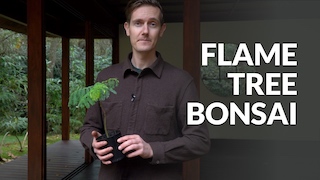Flame tree Bonsai Care guidelines
The flame tree likes a sunny wind-protected place outside during the growing season as long as the night temperatures stay above 50° F / 10° C. Drastic temperature drops are not tolerated. From autumn to spring the tree must be placed in the house or a heated conservatory at temperatures between 50° F / 10° C and 68° F / 20° C. The cooler and darker the place the longer the flame tree will be dormant without leaves.
In summer the flame tree needs a lot of water. Water when the soil gets dry but take good care not to overwater the flame tree. It tolerates short drought periods. In winter, when the leaves have fallen, the flame tree needs much less water. The flame tree tolerates a pH value between 4.5 and 7.5, so avoid very calcareous water. Continue reading about watering Bonsai trees.
Watering
Free lecture from the Beginners CourseApply solid organic fertilizer every four weeks or use a liquid fertilizer every week during the growing season. Use a fertilizer with a balanced N-P-K ratio to promote healthy growth as well as opulent flowering.
Flame trees tolerate hard pruning which should be executed in early spring, if necessary. In summer they must be trimmed consistently in order to control the strong growth and to develop the umbrella-shaped crown with a nice ramification. In winter cut off excess shoots which have emerged in unwanted positions. Wire branches and shoots, if necessary, when they are still young. Take care to remove the wire in time so that it won't bite into the bark. Older branches can be shaped with guy wires. Continue reading about pruning Bonsai trees.
Repot the flame tree, or Delonix bonsai, every or every other year and use a well-draining soil mix. The tree tolerates normal root-pruning, you can remove one third of the root mass. Take care to cut off dead roots and the strong roots circling at the bottom of the pot. As the flame tree prefers a slightly acidic soil, you can add some Kanuma to your soil mix. Continue reading about repotting Bonsai trees.
Flame trees are propagated from seed. Let the dry seeds swell in lukewarm water for a few days before you put them in cultivation soil. Keep them at a steady temperature of 68° F / 20° C. It will take about three weeks until the seeds germinate.
Scale can bother the Flamboyant or flame tree, especially in winter. In this case try to scratch them off manually and use a specific pesticide. Shoot borers or caterpillars can also occur. Overwatering or a too cold position can cause root rot. Then repot the tree, cut off damaged roots and plant it in fresh, well draining soil. Try to improve the conditions for your tree. For more detailed information on these techniques, check out our Bonsai tree care section.
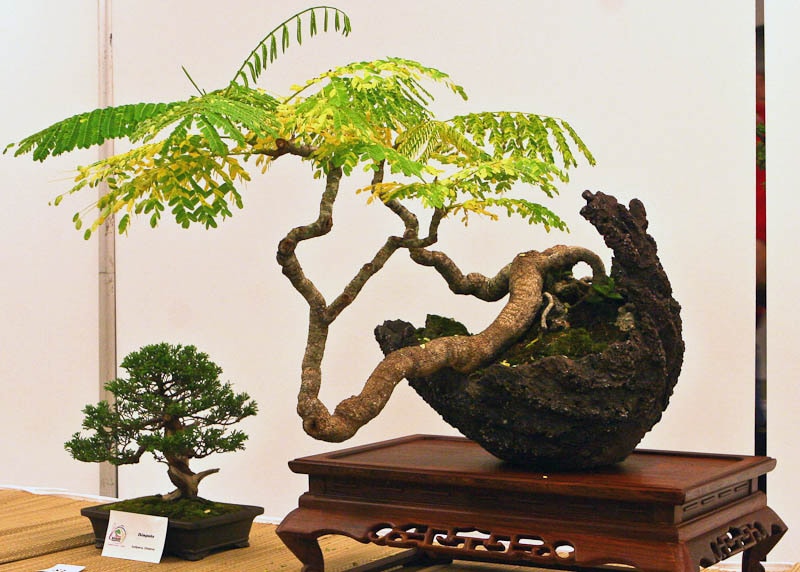
Flamboyant bonsai tree
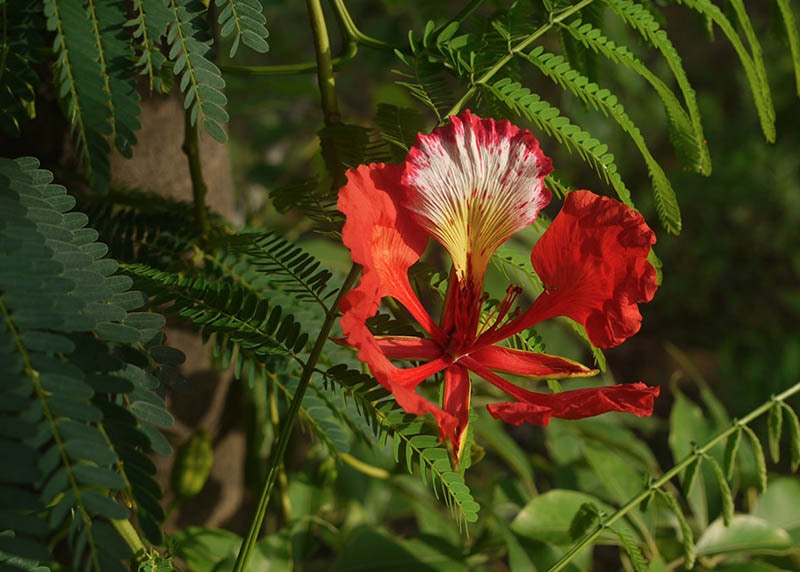
Leaves of the Flamboyant
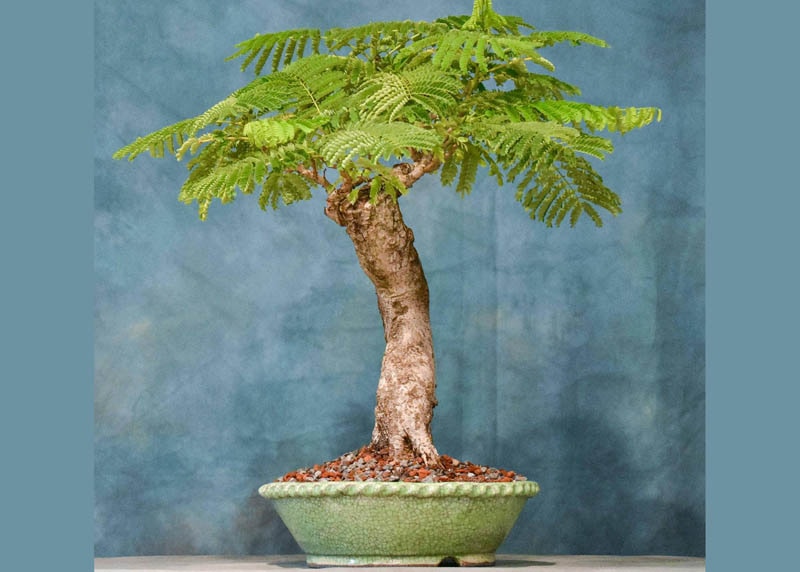
Delonix regia, or flame tree bonsai
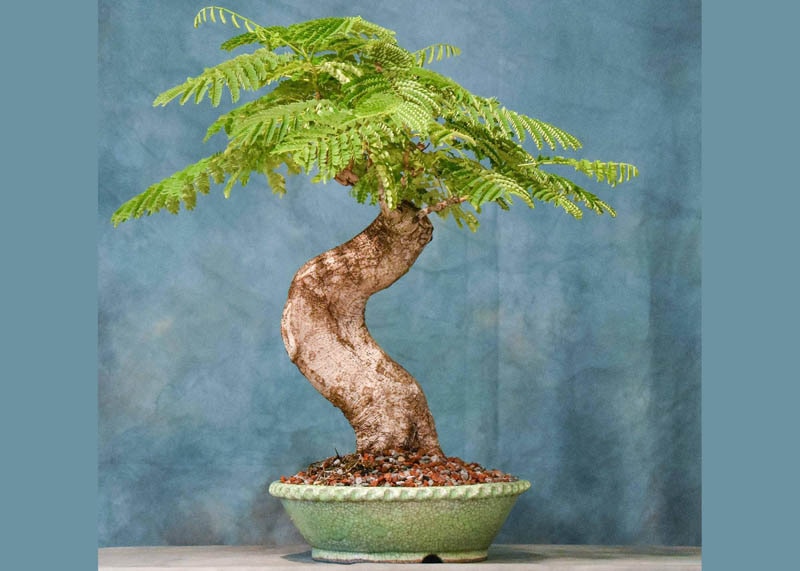
Delonix bonsai
General information about the Delonix, or Flamboyant Bonsai tree
The seed pods can grow 12-24" (30–60cm) long and will look out of proportion on a bonsai tree if you let them develop. The leaves are pinnately twofold and remind of fern leaves. The bark is greyish-brown, smooth on young trees and becomes rough with age. The tree grows fast, can become 10 meters (33ft) high and it takes on a natural umbrella shape which should also be aimed at when the flame tree (often called royal poinciana) is styled as a bonsai. In tropical climate the tree is more or less evergreen while in cooler subtropical regions it will be deciduous. The flame tree does not tolerate frost and needs temperatures between 50°F (10°C) and 68°F (20°C) in winter. If you need help identifying your tree, take a look at our Bonsai tree identification guide.

